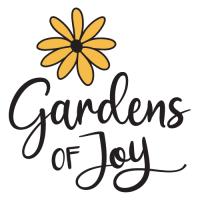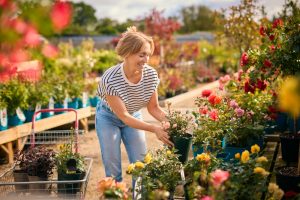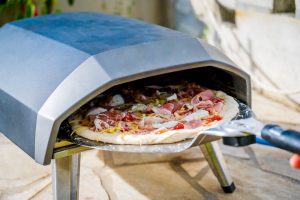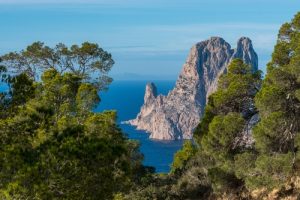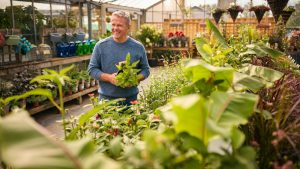A Step-by-Step Guide to Growing Coriander at Home
Growing your own herbs at home is the perfect way to add freshness and flavor to your meals. Coriander, also known as cilantro, is one of the easiest herbs to grow and is a great choice for those looking to start their own garden. With just a few simple steps, you can have your own indoor or outdoor coriander patch and enjoy the herb’s unique flavor in your favorite dishes. In this step-by-step guide, you’ll learn how to select the right type of coriander for your garden, how to prepare the soil, how to plant and care for your herbs, and how to harvest and store the coriander. With these tips, you’ll be able to enjoy your own fresh and flavorful coriander in no time.
Selecting the Right Type of Coriander
The first step for growing your own coriander is to select the right type of coriander for your garden. The most commonly used coriander is the Chinese variety, which produces small white and green seeds. Indian coriander, on the other hand, produces larger and darker green seeds. Whether you decide to grow Chinese or Indian coriander will depend on what you plan to use the herb for. Indian coriander is the preferred choice for cooking due to the way the leaves and seeds smell compared to Chinese coriander. Chinese coriander is best suited for garnishes on dishes such as tacos and salads. Depending on your location, you may also be able to grow Mexican coriander, which is a cross between Chinese and Indian coriander. Mexican coriander is generally used as garnish and is only available during the summer months.
Preparing the Soil
If you’re growing coriander indoors, you can use any type of soil, but if you plan on growing it outdoors, it’s recommended you use a sandy loam soil that drains well. You should also make sure the soil has a pH level between 6.0 and 7.5, which is considered neutral. You can adjust the pH level of your soil by adding lime or sulphur. It’s also recommended that you add compost to your soil to help with drainage and increase soil nutrients. Coriander prefers a warm and humid environment, so the best time to start growing your herbs is in the spring at an indoor temperature of 18 to 24 degrees Celsius. Coriander doesn’t like to be transplanted, so it’s recommended you start with seeds. You can use soil-based planting trays or planter pots with drainage holes to help with watering.
Planting and Caring for Coriander
When planting your coriander seeds, make sure you cover them with a light layer of soil. Firm the soil gently to ensure no air pockets remain, and then water the seeds until they are completely soaked. Coriander grows best in full sunlight, and it can be planted indoors in soil or in a hydroponic system. You can start your coriander seeds indoors around 8 to 10 weeks before the last frost in your area. Once your plants have sprouted, place them in a warm and humid environment. Coriander likes to remain wet and doesn’t like to dry out, so you’ll need to water the plants regularly. You can do this manually or with a sprinkler system. You can also place a tray underneath the pots or planters to help with drainage. Coriander doesn’t like to be fertilized, so it’s recommended you don’t add any fertilizer to the soil.
Watering and Feeding Requirements
Coriander plants need consistent watering, so it’s recommended you water the plants frequently to avoid wilting. Coriander doesn’t like to be over watered, so it’s important to check the soil regularly and ensure it’s moist but not wet. If the soil is too dry, it can affect the growth of the plant and cause flavor loss. You can prevent over watering by installing a sprinkler system that only waters the plants for a certain amount of time. Coriander doesn’t like to be fertilized, so it’s recommended you don’t add any fertilizer to the soil. The best way to ensure your coriander stays fresh longer is to harvest the leaves and leave the roots in the soil. If you must remove the roots, do so carefully and as late as possible to avoid injury to the plant.
How to Tell When Coriander is Ready to Harvest
Coriander is ready to harvest when the leaves have a distinct aroma and the stems have turned brown. At this point, the leaves will also be wider and softer compared to when they are first harvested. You can also harvest the leaves when they are dark green in colour. If you leave the leaves on the plant to get larger, they’ll turn brown. Coriander leaves will stay fresh for a few days if you store them in the fridge in a loosely closed paper bag. You can also freeze or dry the leaves to extend their shelf life.
How to Harvest and Store Coriander
If you’ve planted coriander outdoors, you can harvest the leaves and roots whenever you need them. When harvesting the roots, carefully pull them out of the soil, leaving some behind in the soil to continue growing. When harvesting the leaves, cut them off as close to the base of the plant as possible. You can store coriander in the fridge in a loosely closed paper bag. You can also freeze or dry the leaves to extend their shelf life. Growing coriander
Troubleshooting Common Problems
If the leaves turn black, it’s likely the plant is receiving too much sunlight. If you notice your coriander plants have aphids, treat them with insecticidal soap or a chemical insecticide recommended by the manufacturer for edible plants. If you notice your coriander plants have spider mites, you can treat them with insecticidal soap or a chemical insecticide. If you notice your coriander plants have whiteflies, treat them with insecticidal soap or a chemical insecticide. If you notice your coriander plants are wilting, take a look at the roots and make sure they’re not dry. If they are, you can soak them in water to help them rehydrate. If your plants have yellow or wilted leaves, the soil may be too dry. Coriander plants grown indoors are also susceptible to pests, such as aphids and spider mites. If your indoor coriander plants have whiteflies, treat them with insecticidal soap or a chemical insecticide.
Tips for Growing Coriander in Different Climates
If you live in a warm and humid environment, you can grow coriander year round. If you live in a cooler climate, start growing your coriander indoors in the spring and transplant it outdoors once the weather is warm enough. If you live in a warm climate, coriander can be grown throughout the year in a greenhouse or indoors with a grow light. In a hot and dry climate, coriander can be grown indoors or in a greenhouse. In a cool and dry climate, grow your coriander indoors in pots or in a greenhouse.
Ready to Get Started?
Coriander is an easy and versatile herb that can be used both in savory dishes and in desserts. If you’ve been considering growing your own coriander and want to start with a tried and tested recipe, try making this classic coriander shrimp recipe from scratch. With this step-by-step guide to growing coriander, you’ll soon be enjoying the fresh and flavorful taste of homegrown herbs in all your favorite dishes.
This article is provided by https://www.goodgardn.co.uk/blogs/growing-coriander
